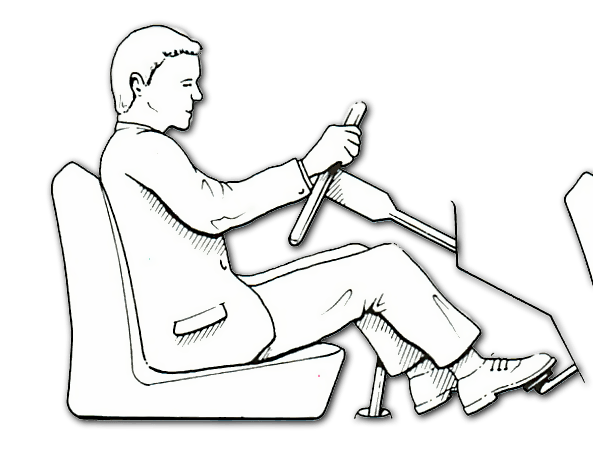How to make driving comfortable
Seat too upright, forcing you to bend your arms.
Steering wheel to far away, making you bend your legs. Some cars seats can force you to slump too low down. The ideal position with legs and arms angled for maximum comfort. You often have to compromise on a seating position because of lack of full adjustability. Common problems are a fixed seat that is too upright, forcing you to bend your arms to allow your feet to reach the pedals; and a steering wheel that is too far away, forcing you to sit so close to the pedals that your legs are bent too much. Shorter drivers can run into height problems when looking over the wheel. You can cure most of these problems by adjusting the seat position with packers. The ideal position is one with the arms slightly bent, the hands at ‘ten-to-two’ on the wheel and the legs not quite at full stretch with the clutch pedal pressed to the floor. If you can, adjust the seat for height first, then distance from the pedals, setting the backrest adjustment last. An adjustable steering column helps. Some car seats do not have enough rearward adjustment to accommodate especially tall people. In these cases you can mount the seat runners further back (look for alternative holes on the floor or seat frame, or drill new holes to bolt the seat to) or buy a bracket set from your dealer to relocate the seat. The bracket sets move the seat backwards on the runners, so the runners need not be moved. If you are happy with your steering position but find the steering wheel too distant for comfort, you can move the position of the rim by fitting a wheel with either a shallower or deeper dish. Most aftermarket steering wheels are available in several different dish depths. Or you might be able to buy a deeper steering wheel boss from a main dealer. The handwheel type of backrest control gives very fine adjustment, but many cars feature instead a release lever to unlock the backrest, with adjustment from one notch to the next. Very often the position that would give the most comfort lies between notches. If this happens, try moving the seat slightly backwards or forwards. Drivers vary considerably in their body height and, luckily, more and more cars are now featuring height-adjustable front seats. It’s a good idea to check the height before setting the other seat adjustments. Different types of height adjustment are used. Luxury cars may have a joystick or rocker switch that controls electric servo motors to adjust the seat. Less expensive models may have a rotary control with a folding handle beneath the front of the seat. Another commonly used system has a telescopic lever control beside the seat – you pull the lever out first, then pull it back to raise the seat. Some less expensive cars have a type of height adjustment that pivots to raise the front of the seat but also changes the angle of the rear cushion. However, it is usually possible to modify the height of the fixed pivot by inserting spacers or wedges, so that both height and angle can be correct. This modification can also be used on seats that do not adjust for height at all. Good shaping of the seat and firm upholstery is vital for sustained comfort on a long journey. For example, as cars corner faster and generate more sideways forces, seats are being made with improved side bolsters to hold the occupants in. Another big improvement in the design of car seats is the increased support given to the small of the back. Older seats tended to have support in the shoulder area, but none below, so that the occupant slumped down and forward in the seat. If your seat doesn’t have enough support in the centre of the back lumbar padding – you can get a special lumbar support cushion from an accessory shop. Finally, remember that airflow is needed through the car at all times, otherwise the build-up of stale air will make the occupants, including the driver, drowsy. To make sure of good ventilation, it is best to have the air control slightly open all the time and to regulate the warmth or coolness with the temperature control.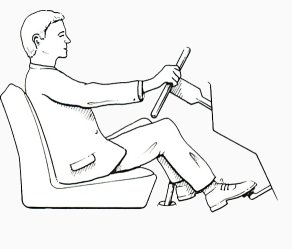
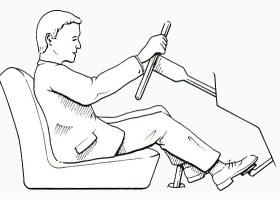
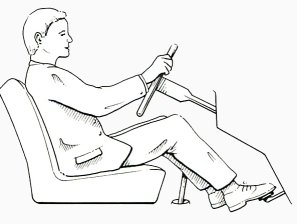
Seat runners
Backrest/height
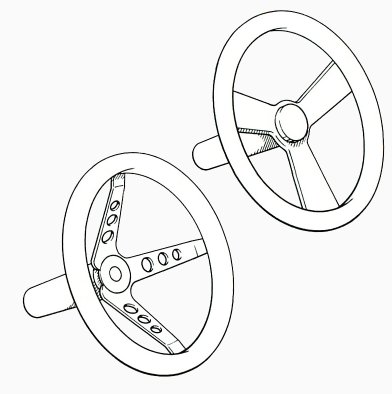
Shaping/support
Ventilation
